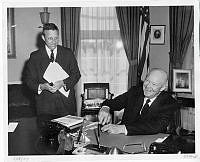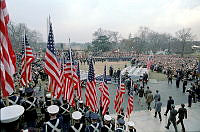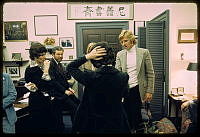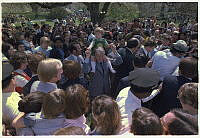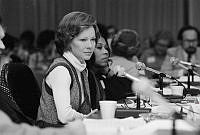Foreword
White House History Number 37
Copyright © Spring 2015 White House Historical Association. All rights reserved under international copyright conventions. No part of this article may be reproduced or utilized in any form or by any means, electronic or mechanical, including photocopying, recording, or by any information storage and retrieval system, without permission in writing from the publisher. Requests for reprint permissions should be addressed to books@whha.org
The press has always been part of the White House story. From friendly to hostile, with many colors in-between, the passion with which the news was reported has always been read with great interest inside the president's doors. Tone in a report can be more important than the actual facts of the matter, which are often imperfect.
Even before the White House, the news easily aroused the emotions of George Washington, who never really grasped the importance of newspapers, and Adams, who did. Jefferson's attitude about the news is unclear. He said that he would rather have newspapers than government, and on the other hand he decried their reports.
In the later nineteenth century newsmen began regular White House "beats," stationed under the dubious shelter of the North Portico, awaiting news. Those the administration trusted might be admitted at times to the offices upstairs. Stories were bicycled up Pennsylvania Avenue to the telegraph office by boy messengers, who stood by. President William McKinley was the first to seek accommodation for the press at the White House, ordering in a visionary expansion of the building in 1900 an entire wing dedicated to the convenience of the newsmen. Never realized, the idea was recast two years later as what we call the West Wing.
In this issue we will visit Lincoln's office, Nixon's West Wing, and the creation of space for the White House press corps in the West Wing. Of special interest are interviews with former president George H. W. Bush and Bill Clinton, made by the consummate White House press "insider" Hugh Sidey before his death in 2005.








